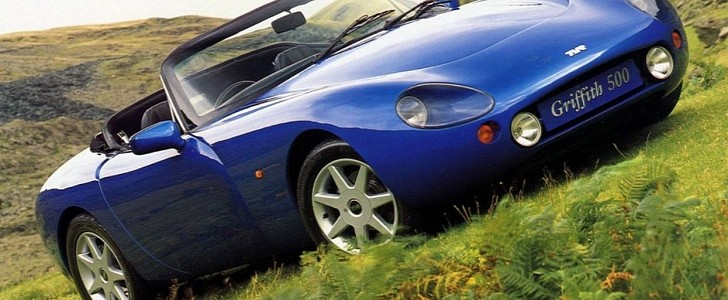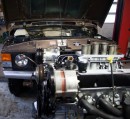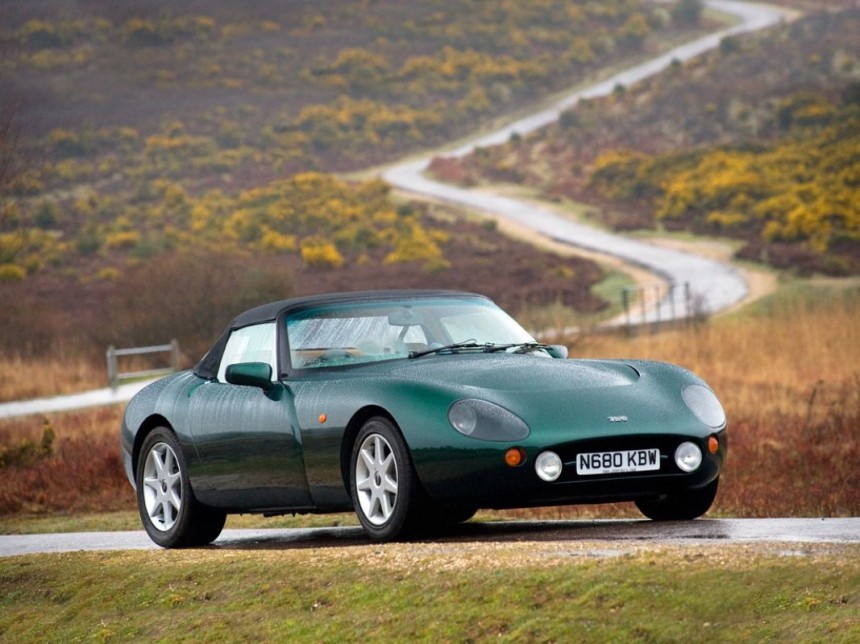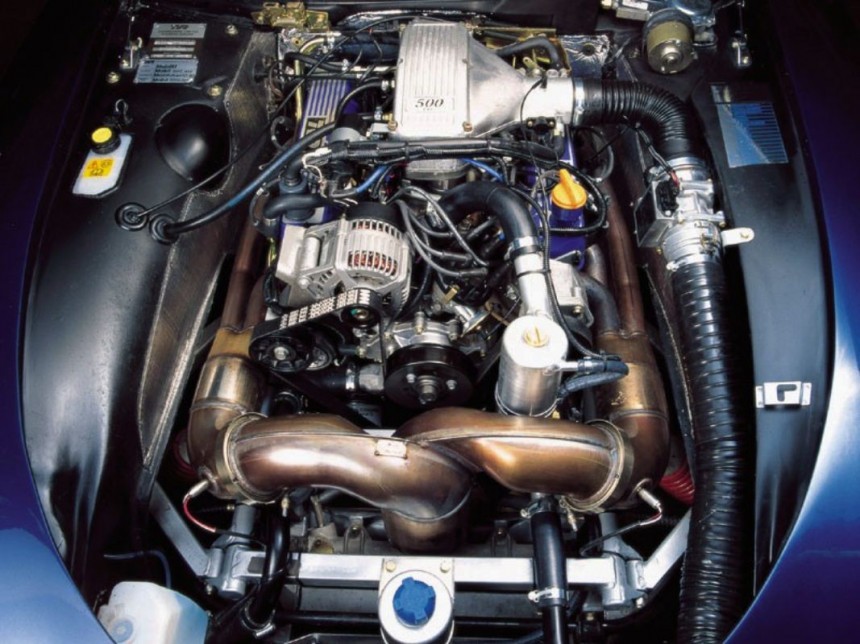The TVR brand was a manufacturer of lightweight, fast, and just pure driver-focused sports cars. And let me tell you, you couldn't mistake a TVR for any other vehicle because of the distinctive design that made the British brand stand out.
However, maybe the most significant achievement for them was the development of their own V8 power unit, which everybody advised against. But first, let's go back a little.
Back in 1967, the Rover V8 was introduced in the British Islands and helped all the automakers from the UK to thrive and create excellent vehicles. Initially, the Rover V8 was the power unit created and imported by General Motors, called the Buick 215, which was an aluminum OHV pushrod engine. Because it was made of aluminum, the powerplant was very light, especially for that era, weighing only 317 lb (144 kg) while still capable of high power outputs, around 200 hp (203 PS).
The powerplant was a success if we were to compare sales volume with that of the competition. For example, in only three years, Buick developed 376,799 cars with this type of power unit. At one point, even brands like Pontiac or Oldsmobile were using the 215; that's why at one point, it was nicknamed the BOP 215 (BOP coming from Buick/Oldsmobile/Pontiac).
Since 1983, the Rover V8 was also present in the TVR models. A wide range of displacement from 3.5 to 5.0 -liter was made, and its power output was enough. In 1991, some worrying rumors spread about Rover being acquired by BMW in the near future. Peter Wheeler (owner of TVR) saw a need for a replacement solution out of fear that the Germans would shut the production of the Rover V8. You need to know that this powerplant was the soul and heart of most TVR models of the era, so Peter Wheeler's concerns were definitely understandable.
However, after consulting with engineers and designers, Wheeler envisioned a high power-to-weight ratio power unit and an engine able to sell individually from any third parties with identical goals. As a result, TVR employees (led by chief engineer John Ravenscroft) began working on this project immediately. Besides John and Peter, an important British engineer named Al Melling (who designed even F1 engines) was also involved in the development. This is why the powerplant was called AJP, which came from Al/John/Peter.
Al Melling designed for the Lola F1 team an unusual 75-degree V8 engine, and he carried this aspect to TVR as well. Additionally, the 86-millimeter stroker crankshaft was of a flat plane design to enhance the capabilities for revs and power.
Although the application of two valves per cylinder may not seem fancy or modern enough for today's standards, the power unit was exceptionally efficient, with a power output of 360 hp (365 PS) at 6500 rpm. Besides, it had enough torque to 319 lb-ft (433 Nm). These numbers were good enough for a 4.2-liter engine.
Still, the engineers from TVR had a desire for even more muscle. As a result, the V8 was bored out to 91 millimeters with a slightly high compression ratio, resulting in 420 hp (426 PS) and 404 lb-ft (550 Nm) of torque.
The power plant was only placed in TVR models from 1996 up to 2003, and thanks to the amazingly lightweight sports car, even the least powerful engine could push a TVR vehicle up to 290 kph (180 mph) with a 0-60 mph (100 kph) time of 4.2 seconds. However, one must be cautious driving a server as its sharp steering, powerful engine, and lack of electronic AIDS make it quite challenging to go fast. Otherwise, mechanically speaking, the doeTVR V8 powerplant doesn't suffer from
major engineering failures.
Soon enough, Al Manning produced a six-cylinder, and the V8 was quickly forgotten. The last production series TVR was built in 2006. However, the second generation of the Griffith model is expected in 2023. Hopefully, the British brand could be revived to its former glory.
Back in 1967, the Rover V8 was introduced in the British Islands and helped all the automakers from the UK to thrive and create excellent vehicles. Initially, the Rover V8 was the power unit created and imported by General Motors, called the Buick 215, which was an aluminum OHV pushrod engine. Because it was made of aluminum, the powerplant was very light, especially for that era, weighing only 317 lb (144 kg) while still capable of high power outputs, around 200 hp (203 PS).
The powerplant was a success if we were to compare sales volume with that of the competition. For example, in only three years, Buick developed 376,799 cars with this type of power unit. At one point, even brands like Pontiac or Oldsmobile were using the 215; that's why at one point, it was nicknamed the BOP 215 (BOP coming from Buick/Oldsmobile/Pontiac).
Since 1983, the Rover V8 was also present in the TVR models. A wide range of displacement from 3.5 to 5.0 -liter was made, and its power output was enough. In 1991, some worrying rumors spread about Rover being acquired by BMW in the near future. Peter Wheeler (owner of TVR) saw a need for a replacement solution out of fear that the Germans would shut the production of the Rover V8. You need to know that this powerplant was the soul and heart of most TVR models of the era, so Peter Wheeler's concerns were definitely understandable.
Al Melling designed for the Lola F1 team an unusual 75-degree V8 engine, and he carried this aspect to TVR as well. Additionally, the 86-millimeter stroker crankshaft was of a flat plane design to enhance the capabilities for revs and power.
Although the application of two valves per cylinder may not seem fancy or modern enough for today's standards, the power unit was exceptionally efficient, with a power output of 360 hp (365 PS) at 6500 rpm. Besides, it had enough torque to 319 lb-ft (433 Nm). These numbers were good enough for a 4.2-liter engine.
Still, the engineers from TVR had a desire for even more muscle. As a result, the V8 was bored out to 91 millimeters with a slightly high compression ratio, resulting in 420 hp (426 PS) and 404 lb-ft (550 Nm) of torque.
major engineering failures.
Soon enough, Al Manning produced a six-cylinder, and the V8 was quickly forgotten. The last production series TVR was built in 2006. However, the second generation of the Griffith model is expected in 2023. Hopefully, the British brand could be revived to its former glory.










